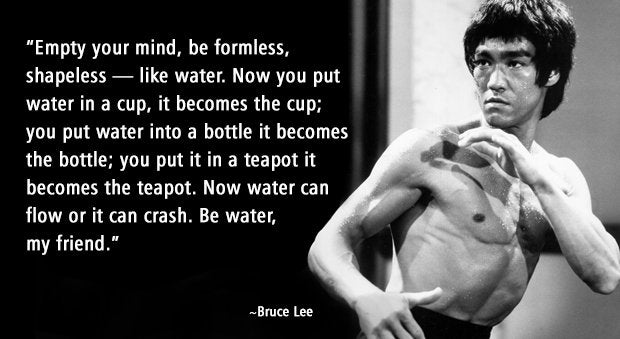The Bruce Lee Messaging Method: How to Write Copy That Moves Donors to Give
How to Write Copy That Moves Donors to Give like Bruce Lee
Lou Medina
3/15/20253 min read


Bruce Lee wasn’t just a martial artist—he was a master of adaptation. He didn’t follow rigid techniques. He flowed, adjusted, and when necessary, struck with full force.
Your nonprofit’s messaging should do the same.
Bruce Lee famously said:
"Empty your mind, be formless, shapeless—like water. Now, you put water into a cup, it becomes the cup. You put water into a bottle, it becomes the bottle. You put it in a teapot, it becomes the teapot. Now, water can flow or it can crash. Be water, my friend."
Most nonprofit messaging does the opposite. It stiffens up, follows a script, and loses donors in the process. Instead of flowing into the reader’s emotions, it drowns in a sea of jargon and lifeless mission statements.
A fundraising email that sounds like a corporate memo? Dead weight.
A donation page that buries the ask under paragraphs of industry jargon? Useless.
A social post so generic it could come from any nonprofit? Forgettable.
The best messaging moves. It flows into the reader’s world, adapts to emotions, and crashes through when urgency demands it.
Where Most Nonprofit Messaging Fails
People don’t give because they understand a problem. They give because they feel something.
Yet many nonprofits assume listing their mission statement and a few statistics will inspire action. It won’t. Facts inform, but emotions persuade. Messaging that fails to stir emotion gets ignored.
If donor engagement is low, the problem isn’t the cause... it’s usually the messaging.
How to Write Donor Messaging That
Moves Like Water
If you want donors to act, your messaging needs to be fluid, flowing when needed, adapting to emotions, and breaking through apathy when urgency calls for it.
1. Flow Into the Reader’s World
Too much nonprofit messaging talks at donors instead of meeting them where they are.
Before writing, ask:
What does my audience care about right now?
What emotions are they already feeling?
How can I make my message fit into their world instead of forcing them into mine?
Don't write like this: “We are committed to reducing homelessness through targeted initiatives.”
Write like this instead: “Tonight, thousands of people will sleep on the streets. You can change that.”
The first version sounds like a press release. The second drops the reader into the problem and makes them part of the solution.
2. Adapt to Emotions, Not Just Facts
Numbers won’t drive donations. Stories will.
Don't write like this: “Your support helps fund our programs that provide essential resources.”
Write like this instead: “When you give today, a mother can feed her child without wondering where the next meal will come from.”
The second version shows the donor the impact of their gift instead of explaining it.
A powerful message paints a picture, not just a statement.
3. Crash When Necessary
Water flows, but when needed, it breaks through. Your messaging should do the same.
Too many nonprofits tiptoe around urgency. They hint at deadlines instead of driving them home.
Don't write like this : “Consider supporting our year-end campaign.”
Write like this instead: “Midnight is the deadline. Every dollar given before then will be doubled to help twice as many families.”
The first version is easy to ignore. The second creates a sense of urgency and consequence. When urgency is real, don’t soften it. Push it.
Make Every Sentence Move
Writing like water means cutting the fluff and making every sentence pull the reader forward. Before sending that email, publishing that donation page, or posting that update, ask:
Does this flow naturally?
Does it connect with real emotions?
Does it hit hard when urgency is needed?
If the answer isn’t yes, rewrite it.
When words move like water, donors don’t just read them. They feel them. And when they feel them, they give.
Final Step: Apply This to Your
Next Fundraising Campaign
Pull up the last donor email you sent. Does it flow? Adapt? Crash?
Find one stiff, lifeless sentence and rewrite it using these principles.
Test it. Watch what happens when your messaging moves instead of sitting still.
If your copy isn’t driving action, it’s standing in the way.
Write like water my friend.
